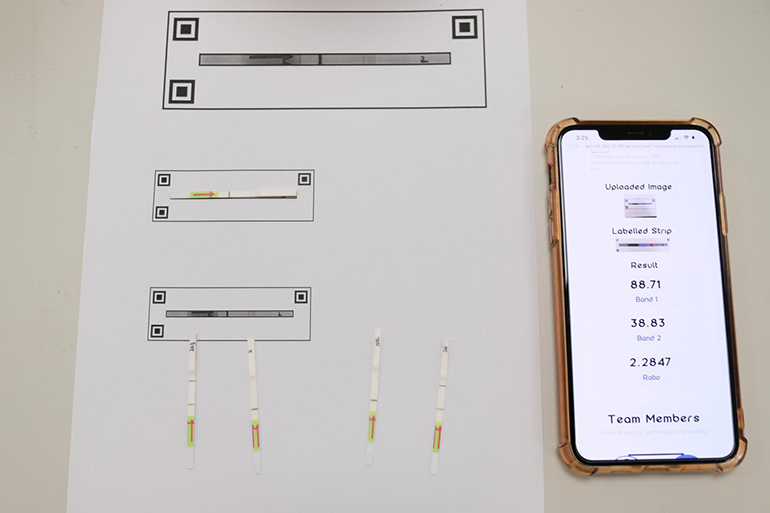
Researchers at Nanyang Technological University, Singapore (NTU Singapore) have developed an easy to perform CRISPR-based COVID-19 test that takes only 30 minutes for the results to come in. The test, which involves dipping a paper strip into a mixture containing a nasal sample, is unaffected by new variants of the virus, and could be useful for rapid testing performed by non-specialists.
“Viruses are very smart. They can mutate, edit, or shuffle their genetic material, meaning diagnostic tests may fail to catch them. Hence, we spent considerable effort developing a robust and sensitive test that can catch the viruses even when they change their genetic sequences,” said Tan Meng How, a researcher involved in the study, via an NTU press release. “In addition, frequent testing is essential for helping to break the transmission of viruses within populations, so we have developed our tests to be rapid and affordable, making them deployable in resource-poor settings.”
New COVID-19 variants have been on people’s minds as vaccination programs roll out in many countries. Such new variants could lead to false negatives in certain diagnostic tests, inspiring this new test that is reportedly unaffected by genetic mutations within the virus. Other benefits include its rapid test time (30 minutes), low cost, and ease of use. The test does not require RNA purification, unlike the current gold standard PCR test, and can be performed with crude nasal samples.
Called the Variant Nucleotide Guard (VaNGuard), the technology relies on the CRISPR system to recognize specific segments of SARS-CoV-2 genetic material and cut them out, using guide RNAs to recognize the sequences of interest. Once this has occurred, the snipped fragments start to glow, and this light can be detected using a microplate reader.
“Combining two or more guide RNAs with the enzyme enAsCas12a ensures that if one of the guide RNAs fails to guide it to the correct segment of the virus because of a mutation, the other guide RNA can still ‘rescue’ this mismatch,” said Tan Meng How. “If the virus is present, the molecule will glow. If not, it means the virus is not present to cause the hyper-activation of the molecular scissors.”
The researchers have incorporated the technology into an easy-to-use paper strip. To perform the test, a user mixes a crude nasopharyngeal sample with a reaction mix in a test tube, and then dips the paper strip into the tube. If only one band appears on the strip, the virus is not present, but two bands indicate the presence of SARS-CoV-2.
See an NTU Singapore video about the technology:
Study in Nature Communications: An engineered CRISPR-Cas12a variant and DNA-RNA hybrid guides enable robust and rapid COVID-19 testing
Via: NTU Singapore
